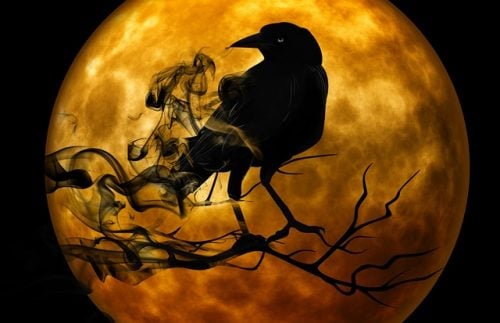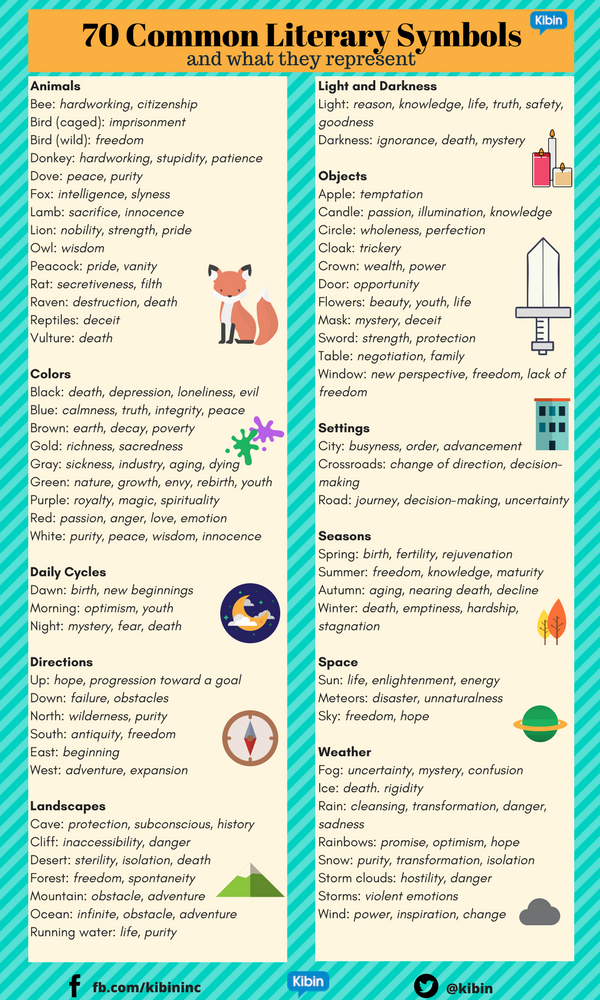One time, in the ninth grade, we were reading The Cask of Amontillado by Edgar Allan Poe. We were discussing what Poe meant by what he wrote, specifically about the symbolism of the short story.
A boy in the class asked why Poe just didn’t say what he meant instead of hiding the meaning in symbols and metaphors. I’m sure we’ve all felt the same way at some point. But the answer to that boy’s question was that the story would be really dry and boring.
Symbolism is one of many literary devices used not only to bring more meaning to a story but also to make it more captivating.
If you have trouble writing about literary symbols, or even finding them in the first place, you’re not alone. Plenty of students are in the same boat. But don’t worry, I’m here to help you navigate through the rough seas of symbol-searching.
What Is Symbolism?

The first thing we have to talk about is what symbolism and symbols mean.
Put simply, literary symbols are objects, actions, places, words, colors, and sometimes characters that signify something different from their original meaning. Symbolism, then, is the use of symbols within a story.
Symbols exist everywhere, even outside of literature. Think about the American flag, for instance. The 13 stripes on the flag symbolize, or represent, the original 13 colonies, while the stars represent each of the current 50 states.
Wedding ceremonies are also loaded with symbolism.
The rings represent the lasting commitment the couple vows toward one another. Some people have knot-tying, sand-pouring, or candle-lighting traditions that symbolize the way two lives are becoming one through the marriage.
It works the same way in literature. Authors may choose to make up their own unique symbols or use some more common ones.
70 Common Literary Symbols

Most authors use some common symbols within their texts.
Using symbols people already know helps readers realize what the symbols represent without the need for much more explanation. It keeps the story or poem more succinct, understandable, and enjoyable to read.
Below are some of the most common literary symbols, separated by category.
It’s important to note that, just because authors use a color or an object in their writing, it doesn’t mean it’s necessarily a symbol. They could be describing the colors of a sunset for imagery purposes instead.
I know—confusing, right? So how are you supposed to know when something represents a bigger idea or when it’s just part of the prose?
How to Tell When Something Is Really a Symbol

Now that you have an idea of what symbolism is and what a few of the most common literary symbols are, it’s time for the hard part—identifying the symbols within the book, play, or poem you’re reading.
Hopefully, these next few pointers will make the process easier.
1. Look at descriptions
If a character is always dressed in purple clothing and wearing a crown, these items probably symbolize the character’s power, wealth, and royal status. If the items disappear later in the story, you can see the character might have lost power and royal status.
Colors, numbers, objects, and names can all be literary symbols. And if certain descriptions of objects appear regularly throughout the text, they’re probably symbols.
2. Look for repetition
Symbols hardly ever appear just once. Think about The Sixth Sense. In that movie, whenever a ghost is about to appear or is in the scene, the color red is always present. If this just happened once or twice, it probably wouldn’t mean much.
But the fact that it happens every time makes it symbolic. The same thing happens in literature. If a character only appears at night (think vampires) throughout the book, the character probably represents some evil or mystery.
3. Pay attention to the turning points in a story
When a symbol does only appear once or twice in a story, it’ll be around the turning points. Think about a rainbow after a large storm. The characters may have struggled through the storm, but the rainbow symbolizes hope and peace.
Thus, turning points are your cue to pay attention. If there’s a dramatic shift in the tone or plot, you can probably find a symbol or two in the text.
Writing About Literary Symbols With Confidence
Writing with confidence about any literary device can be challenging. But there are a few ways that can help.
First, do your research.

If you just can’t find any literary symbols in the book or poem you’re reading, find out what others are saying about it. There are websites where you can find the common symbols in many popular stories. Kibin’s a pretty valuable resource too. Just look at these posts:
- 4 Tips for Dissecting Symbolism in The Scarlet Letter
- 3 Smart Ideas for Your Sir Gawain and the Green Knight Analysis
- Lord of the Flies Symbolism: 3 Ideas for Your Essay
There’s also Kibin posts that address the symbolism in Beowulf, On the Road by Jack Kerouac, The Grapes of Wrath, Araby by James Joyce, Frankenstein, and The Great Gatsby. Need some general advice on writing a literary analysis? We’ve got you covered there too.
You’ll want to use your own evidence, however. Plagiarism is a big no-no. It can hurt not only your grades but also your credibility.
Using another source to find out what symbols are present in your book is not plagiarism as long as you gather the evidence from the text yourself and write about it using your own words and ideas.
Finally, it all comes down to practice. You won’t feel confident the very first time. But the more you look for, analyze, and write about literary symbols, the easier it gets.
Lean On Us for More Confidence
Whether it’s your first or 91st time writing about literary symbols, you may still not be 100% sure about your analysis. That’s perfectly normal.
Fortunately, the team of Kibin editors is here to make sure your writing flows and that you have enough support to back up your claims.
With their help, you can be completely confident about your essay.

